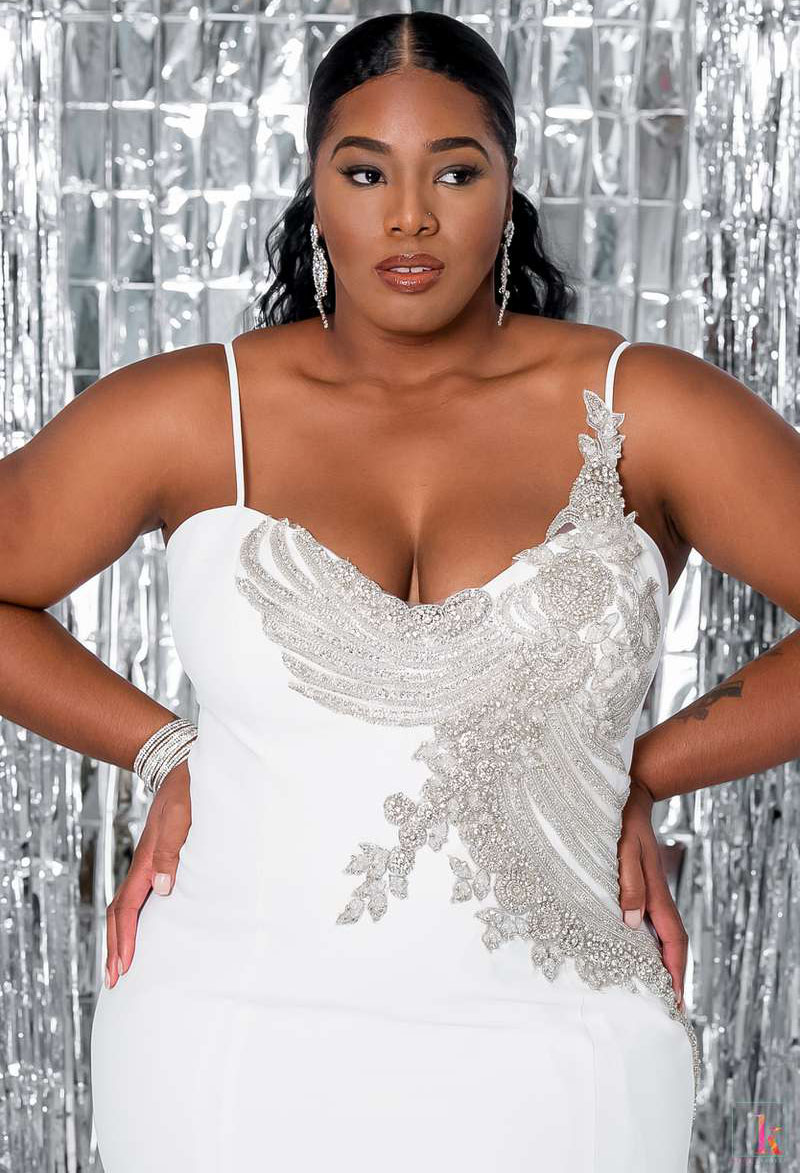Find out how these designers are making the industry more inclusive.

When thinking of top wedding dress designers, few—if any—faces of color come to mind. There definitely isn’t a lack of talent in the mainstream bridal space, but there is a lack of diversity.
“Right now there is no black bridal designer at the height of the industry. Amsale was the exception,” Andrea Pitter Campbell of Pantora Bridal, a salon catering to black brides, says.
The late Amsale Aberra not only shook up the industry with her designs, she was a trendsetter when she broke into the industry in the '80s, creating luxurious dresses for the minimal bride. She was also the only black designer at the forefront of the industry.
As a black woman and a business owner, Pitter Campbell sees the gap firsthand. “I'm not sure why [diversity is] lacking because we take up just as much of the space,” she says. “I’m not sure why we’re not thought of when it comes to at least having a woman of color consultant in the store, someone who understands our body types and the types of events that we throw culturally and how we need to dress.”
Pitter Campbell hopes her line can achieve the same level of recognition as Amsale, but as her own star rises, she hopes to bring a few friends with her.
“As Pantora is on the rise, I hope it’s not just Pantora because we don’t need to be the only or the first,” she says. “It would be nice if brides could find a black designer just that easy.”
So in addition to Pantora Bridal, here are a few other black bridal designers that all brides-to-be should put on their radar.
Andrea Pitter Campbell of Pantora Bridal

Not only do her designs take on classic silhouettes and modern details, but she designs with the black bride in mind. While illusion dresses are gorgeous, the standard mesh colors don’t really work on darker skin, so Pantora Bridal created, Forgotten Skin Tones, their own line of mesh and lining.
“I think we are up to about six colors right now and we are forever expanding,” Pitter Campbell says. “Each color can work with three shades up and three shades down, so there is a color for everyone right now. We come in so many different colors, so it’s very understandable why the market doesn’t adapt to the black woman, but that doesn’t mean there should be a lack of effort.”
Pantora dresses also account for curves with a hip-first approach to sizing. Their size chart accommodates a smaller bust with a fuller hip, what Pitter Campbell calls the “classic black girl shape.”
Jean-Ralph Thurin

“The clients that come to us have done their research, they’ve done their due diligence, they know who I am, and they come to get a dress made because they know I'm going to do the right thing,” Thurin says.
He designs dresses to fit black women and their bodies and gets a lot of his inspiration from architecture. “Sometimes its a curve in the window, it’s a pillar, it’s the interior, but that really gets me going,” he says. “Most of my clients really love form-hugging dresses and really appreciate their curves, so a lot of times it's me trying to enhance that with different types of lines and fabric embellishments, but it extends from architecture.”
Even with so much experience this might be the first you are hearing Thurin’s name. He says the fight for black designers is continuous.
“There are a lot of wonderful black designers who do great things and who are very talented who are just trying to be seen and be heard,” he says. “I think the challenge for us is just to keep trying to be seen and to be heard just trying to get the right representation and get people to see what your good at what your talent is.”
Esé Azénabor

“Before I made my own dress I wanted to do some research and go to some bridal stores to see what is out there, and I found that a lot that was out there catered to women with lighter skin as far as matching the lace or the illusion tulle,” Azénabor says. “So when you are a darker woman and you wear the dress it doesn’t match and that’s the only option you have. You just end up wearing it but it’s not really made for you.”
Now she makes dresses completely tailored to each bride, as most of her work bridal work is custom.
Azénabor pulls her design inspiration from travel. She was born in Nigeria, raised in Canada, and went to boarding school in the United Kingdom, so she has plenty to draw on. Her experiences typically lead her to create wedding dresses for brides looking to stand out. Azénabor says her bride “loves detail; she understands attention to detail and the work that goes into creating a garment.”
Nneka C. Alexander of Brides by Nona

Enter Brides By Nona. While they mostly create custom gowns, their collection is used to get both the designer's and bride's wheels spinning. ”Every year we try to come up with a collection that is more diverse than the previous year so we are consistently making our work unique and different,” Alexander says. “My collection is to show you how diverse we can be not for you to order from it. It’s just for you to see the lineup of what we could do.”
The result is typically a wedding dress full of intricate details, with clean and modern lines that makes the bride feel beautiful, romantic, and sexy.
![[feature] 4 Black Bridal Designers to Put on Your Radar](https://blogger.googleusercontent.com/img/b/R29vZ2xl/AVvXsEgiWHehni7eTVmL1Dc7GT85Ji1VYTDXM25smTpBT2XAAd2qtBvrqqrg4VeZ9n96DqvEQ8IlqCgpuRZLvE6MuySEgEHpKDGBVOT51A6wGvM6_zJSmpEsLxG1oKy9u7fZWWpRSKz4lY1Bzi8L/s1600/women+4.jpg)






















